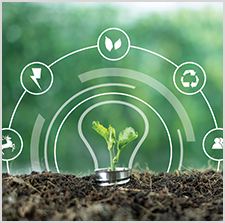In-Mold Labeling and Sustainability – Friends or Foes?
November 29, 2021
It is without a doubt that in-mold labeling is a growing segment among brand owners and consumers alike in both the consumer product and food segments. As a favorable alternative to glass and metals, in-mold packaging is expected to register a CAGR of 9% by the end of the forecast period 2021 – 2026. That being said, a question that comes to mind is: With such positive growth rates expected are there any threats that could impact this growth? One of the suggested answers is…
Sustainability.
I know what you’re thinking… isn’t in-mold labeling the most sustainable option in comparison to glass and metal packaging? How can sustainability – the very reason some brands and consumers are making the switch to thin wall iml packaging – be a threat?
Sustainability as friend
When compared to its biggest rivals – glass and metals – in-mold packaging has a variety of sustainable features. Since the packaging and the label are made with the same material, the package is fully recyclable. It’s also lightweight, meaning decreased shipment emissions and a much smaller transportation footprint. In-mold packaging can also be stacked tightly, so there’s less wasted space during shipment and on store shelves (again, think shipment emissions and refrigeration/restocking costs). In-mold labels are strong and durable and can withstand both rough handlings, shipment-induced scuffing, and offer supreme print quality. It is also less likely to result in break waste and has higher safety ratings in comparison to glass and metals.
Yet many of the driving factors for thin-wall packaging are less about sustainability and more about convenience, functionality, design appeal and branding longevity. While this is great for brand owners, does it resonate equally with consumers when compared to sustainable drivers?
Sustainability as foe
While sustainability may be credited for some of in-mold packaging’s success, it may also be something that could hinder its future growth. As a demographic known for changing many consumer habits, Millennials have shown they are willing to pay more for a product with packaging that is environmentally friendly. Yet, what do they consider sustainable? Is plastic still faced with a bad rap?
One key factor in the lingering negative connotation of plastics is landfills and biodegradability. Many plastics do not biodegrade to any significant degree, while some do so very slowly if exposed to air, water and light. Substituting a variety of plastics packaging with non-plastics alternatives would increase the amount of packaging generated annually in the US by 55 million tons. Nobody loves the sight of a plastic bag blowing in the wind or a plastic bottle washed up on shore – yet having them end up in a landfill is just as detrimental to the environment.
So is there a solution? In 2017, nearly 1.35 billion pounds of post-consumer rigid plastics were recycled nationwide – four times the amount recycled in 2007. Today, over 60% of people in the U.S. have access to non-bottle rigid container recycling. However, it is up to both the consumer and the marketplace to continue investing in such resources. With 40% of U.S. consumers still in need of access to such recycling programs and with plastic accounting for 19.3% of the U.S. litter source, in-mold labeling will still continue to see sustainability as both friend and foe.
Do you agree? What do you think is the biggest threat to in-mold packaging?
More on Inland’s sustainable initiatives here.



